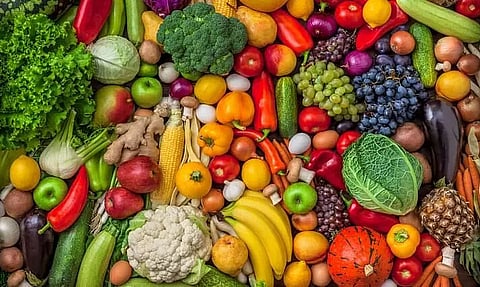
- Home
- Live Blog
- Breaking News
- Top Headlines
- Cities
- NE News
- Sentinel Media
- Sports
- Education
- Jobs

The Gauhati High Court’s recent directive to the Assam Government to implement measures preventing the entry of contaminated vegetables into Guwahati has highlighted a significant public health concern. The presence of excessive chemicals in vegetables poses severe health risks, necessitating stringent regulatory interventions. The court’s directive underscores the need for a robust mechanism to trace the origin of contaminated vegetables and curb the excessive use of harmful chemicals by farmers.
Consumption of vegetables containing high levels of pesticides, heavy metals, and other toxic chemicals can have serious health repercussions. Experts unanimously agree that prolonged exposure to such contaminants can lead to severe diseases, including cancer, neurological disorders, and organ damage. The High Court, in response to a Public Interest Litigation (PIL) filed by advocate Seema Bhuyan, has recognized these risks and emphasized the necessity of immediate corrective action.
The court’s directive mandates the establishment of an effective on-the-spot testing mechanism at Guwahati’s entry points to detect the presence of harmful chemicals in vegetables. This decision follows an alarming revelation by an expert committee, which found unacceptable levels of chemical substances in agricultural produce available in markets. The All India Network Project on Pesticide Residues (AINPPR), under the Indian Council of Agricultural Research, was entrusted with investigating pesticide and heavy metal contamination in food products. Their 1,200-page report presented to the High Court confirmed that 53 vegetable samples contained cadmium and lead, while certain paddy and tea samples had pesticide residues exceeding the Maximum Residue Limit (MRL) prescribed by the Food Safety and Standards Authority of India (FSSAI).
The findings of the AINPPR report validate the PIL’s concerns, highlighting that excessive pesticide use is not limited to vegetables but also affects other food items, including rice and tea. This widespread contamination necessitates a comprehensive strategy to mitigate the risks. While sporadic crackdowns on artificially ripened fruits have been conducted in Guwahati, they have largely been ineffective. The High Court’s directive emphasizes the need for a structured modus operandi that extends beyond Guwahati to other urban centers in Assam. Without statewide monitoring, contaminated vegetables may be diverted to smaller towns or even neighboring states, perpetuating the health hazards.
To implement a sustainable solution, a coordinated approach involving multiple government departments—agriculture, horticulture, food safety, and health—is imperative. The High Court has called for such collaboration to ensure the effectiveness of testing measures. However, merely identifying contaminated vegetables at entry points will not suffice; addressing the problem at its root—farms—should be the government’s priority.
One of the most effective ways to prevent excessive chemical usage is by educating and supporting farmers. Strengthening Krishi Vigyan Kendras (KVKs) across Assam can help train farmers on the appropriate use of fertilizers, permissible chemical limits, and sustainable bio-pesticides. Additionally, promoting organic farming practices can significantly reduce dependence on harmful chemical inputs.
The northeastern region, including Assam, has historically had a natural advantage in organic farming due to traditional agricultural practices. However, indiscriminate chemical use threatens to erode this advantage. Encouraging organic manure and bio-fertilizer use through government subsidies and awareness campaigns can help farmers transition to safer agricultural practices. If Assam successfully establishes itself as an organic farming hub, farmers can benefit from premium pricing for chemical-free produce.
For the state government’s efforts to be effective, permanent monitoring mechanisms must be established. Routine inspection and testing of vegetable and fruit samples should become a regular feature in Guwahati and other markets. Additionally, deploying adequate staff to conduct these inspections will be crucial to sustaining the initiative. Without a dedicated team, enforcing these measures on a daily basis will be challenging.
Assam’s approach to food safety could also serve as a model for other northeastern states. If neighboring states adopt similar testing mechanisms, contaminated produce from Assam will lose its market, thereby discouraging unscrupulous traders and farmers from continuing harmful agricultural practices. Consumer awareness also plays a vital role in this process; when people understand the health risks associated with contaminated food, demand for organic and chemical-free produce will increase, further compelling farmers to adopt safer methods.
The Gauhati High Court’s directive is a landmark decision aimed at protecting public health from the dangers of chemically contaminated vegetables. While on-the-spot testing at entry points is a crucial step, the broader issue of excessive pesticide and chemical use must be tackled at the farm level. A combination of stringent regulations, farmer education, and consumer awareness will be necessary to ensure long-term food safety. By implementing a comprehensive and coordinated strategy, Assam can safeguard its people from hazardous food consumption while promoting sustainable and profitable agricultural practices.
ALSO READ:
ALSO WATCH: